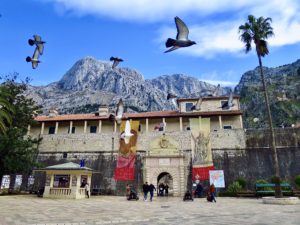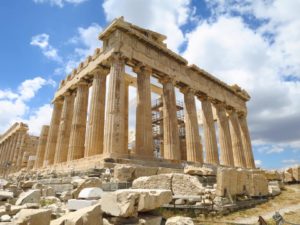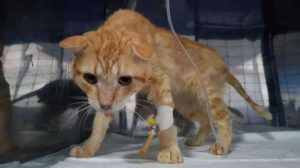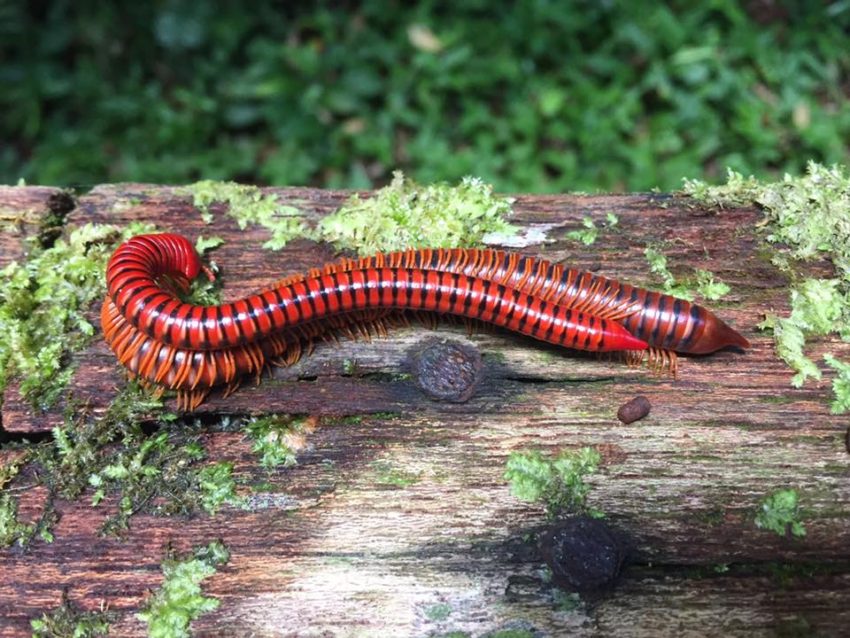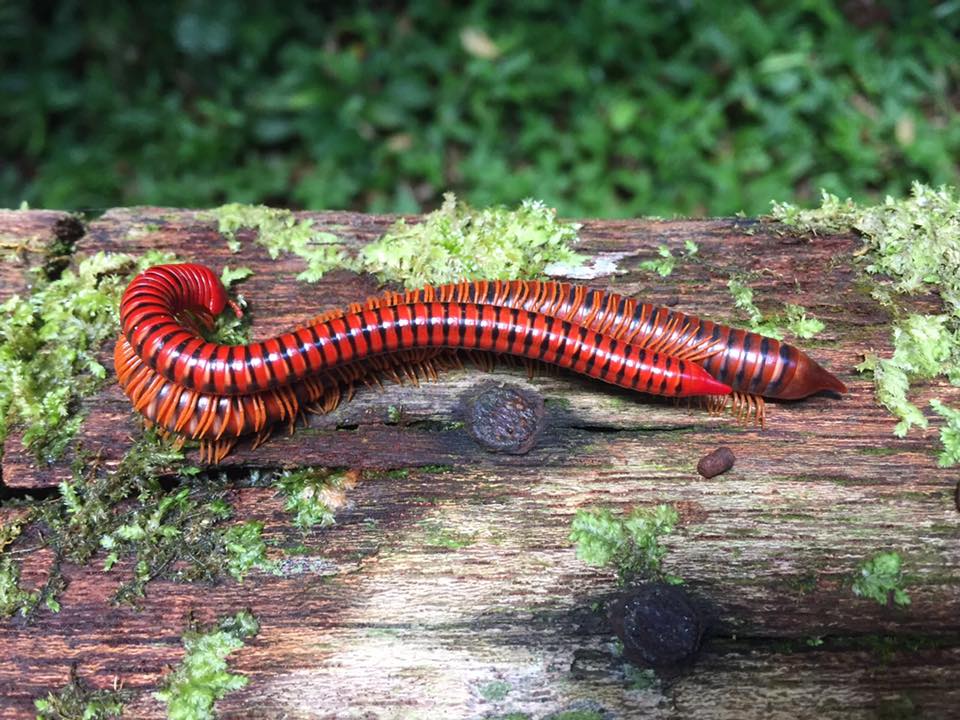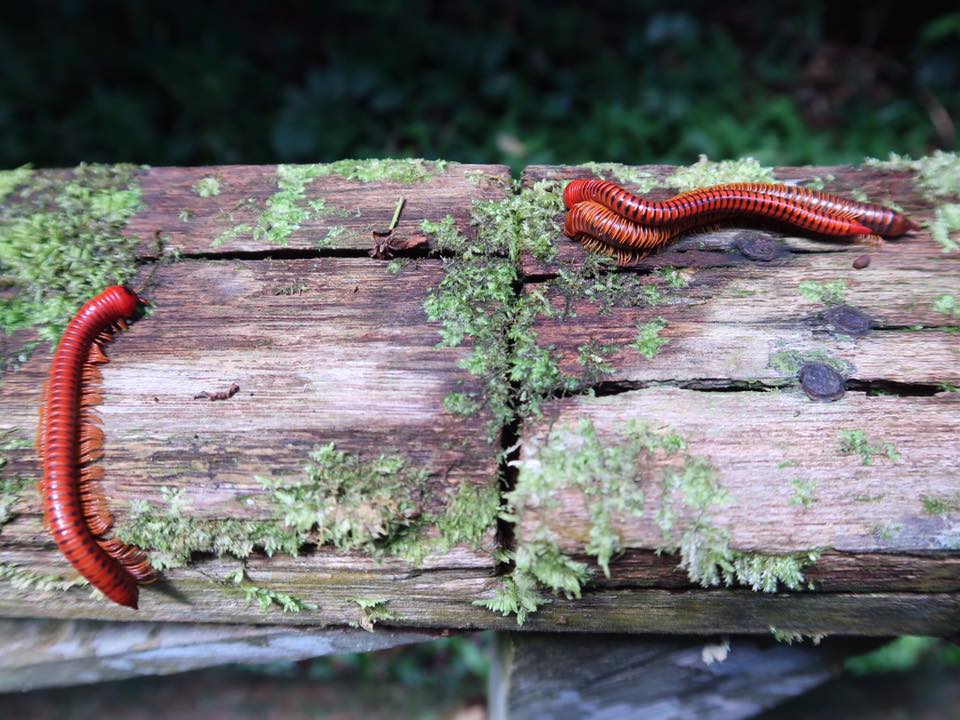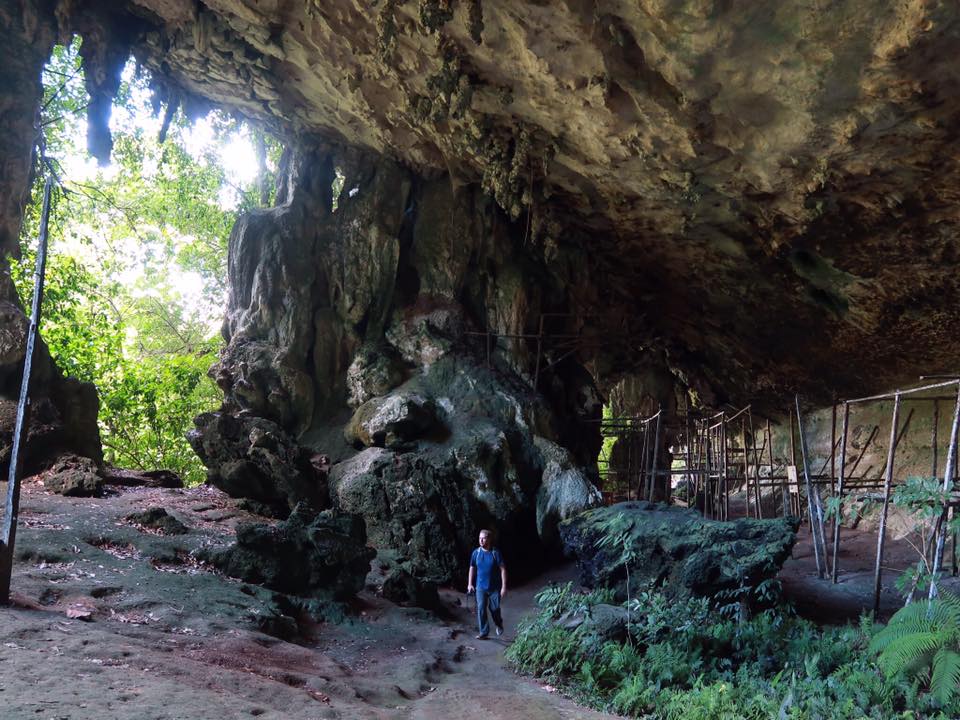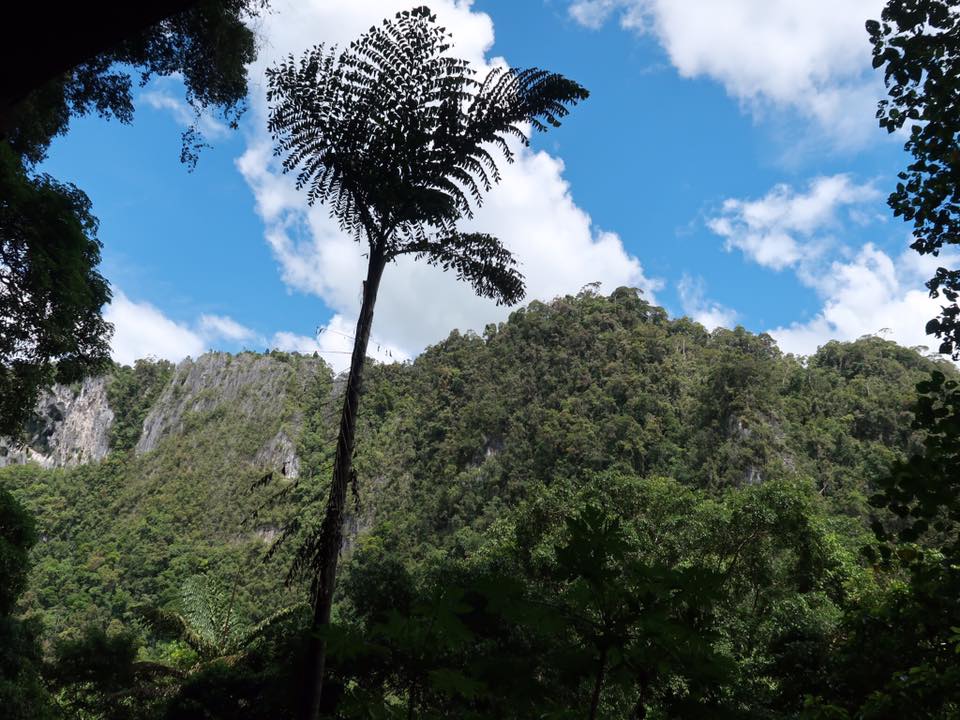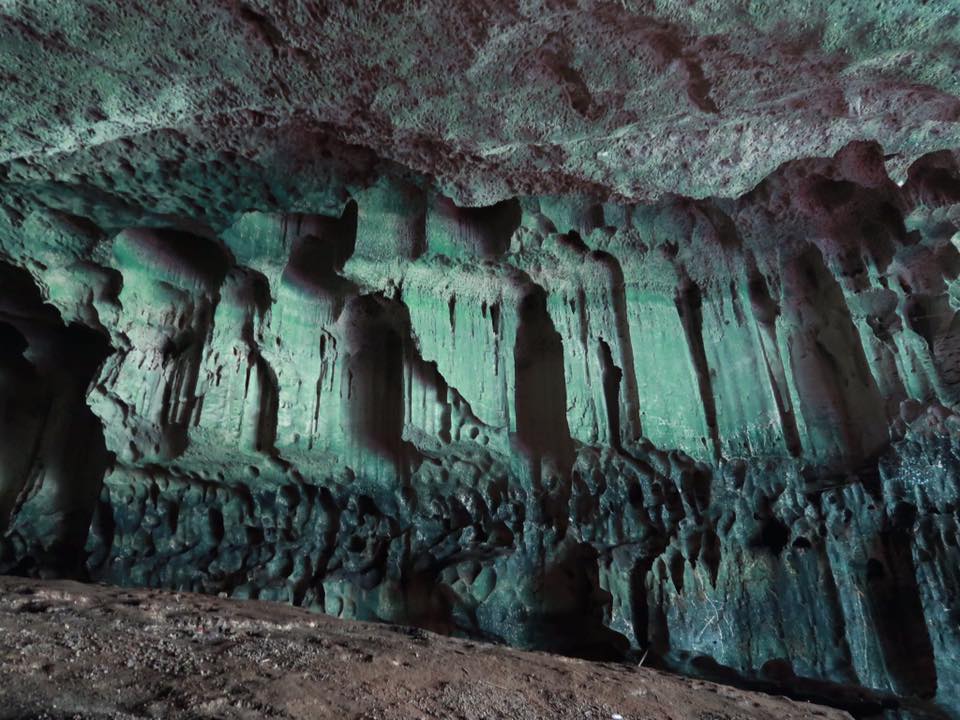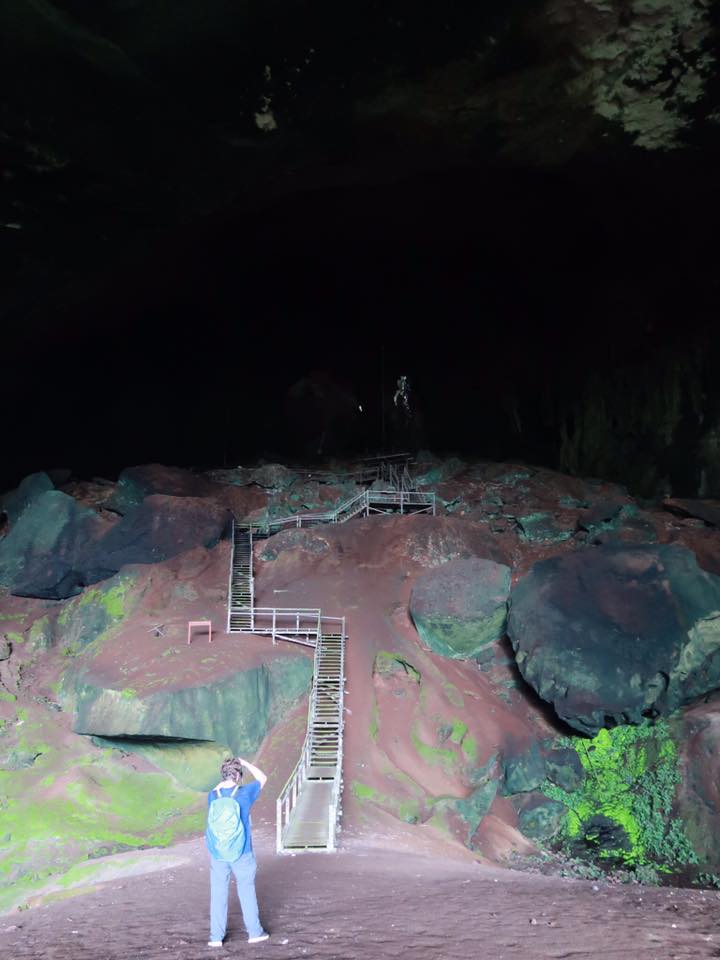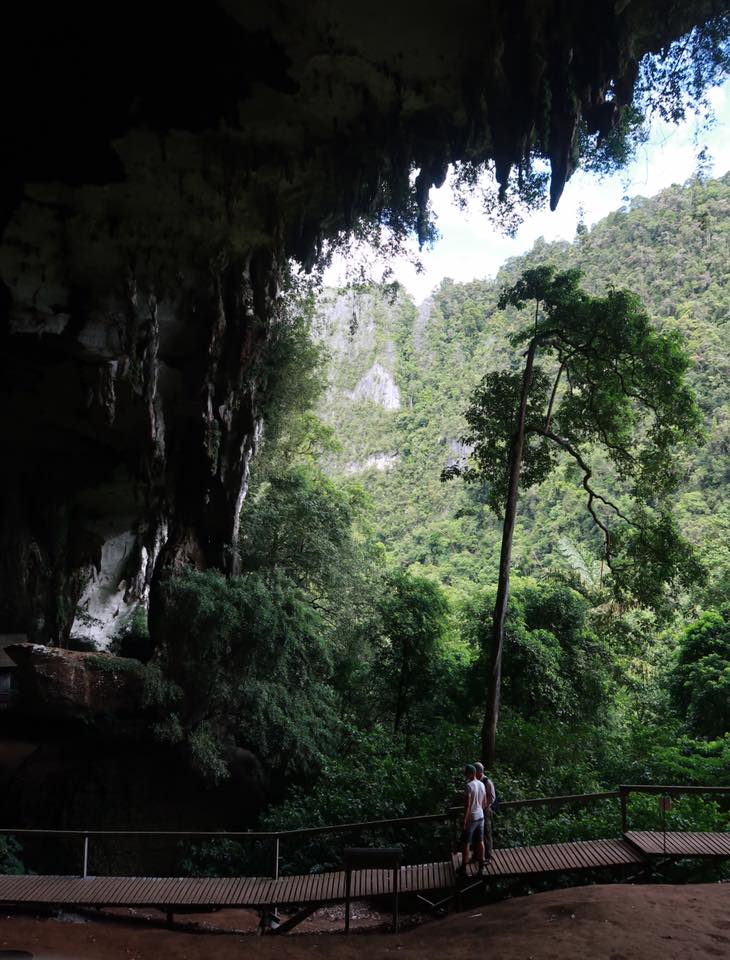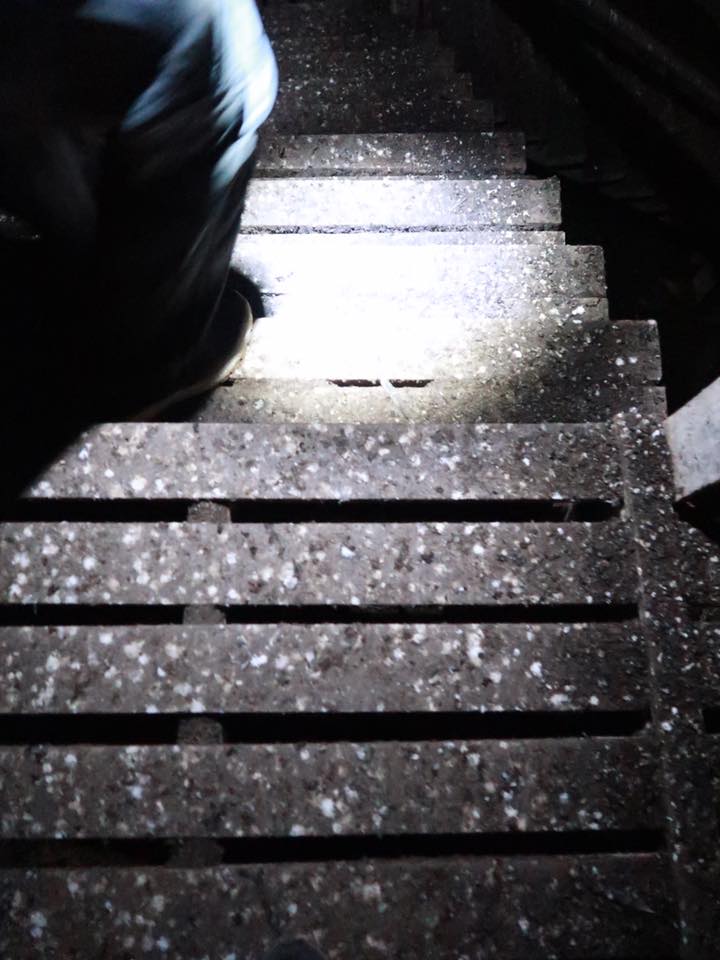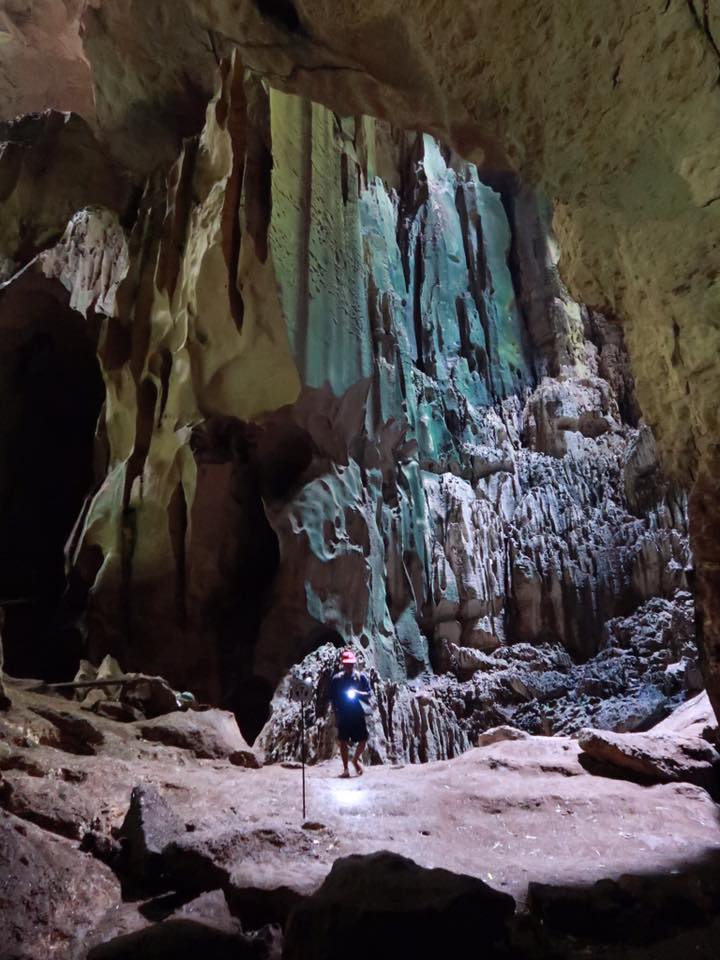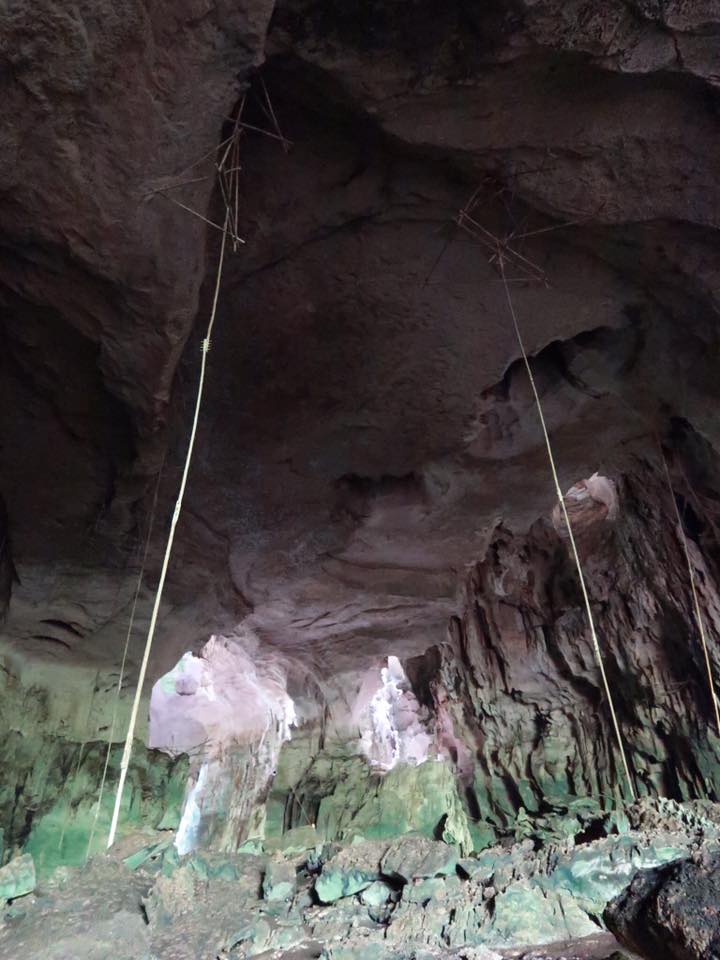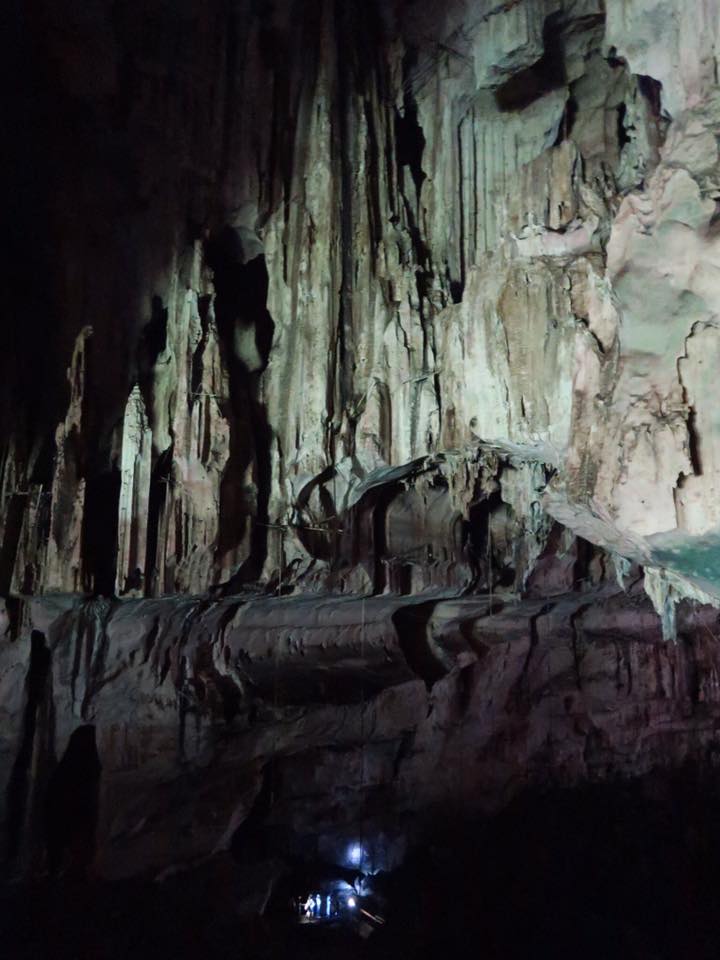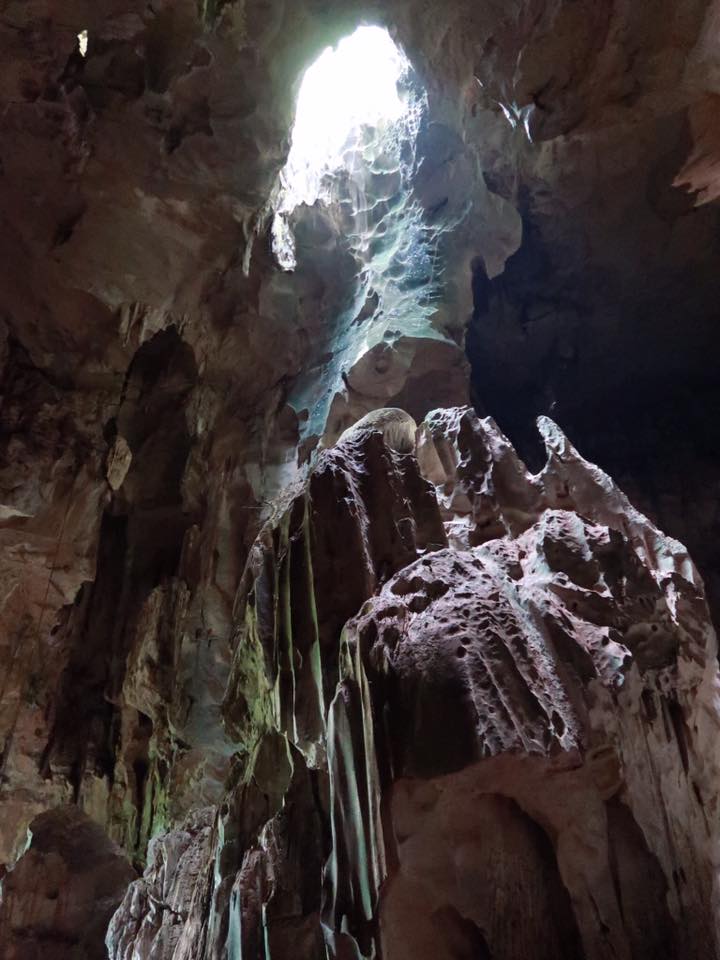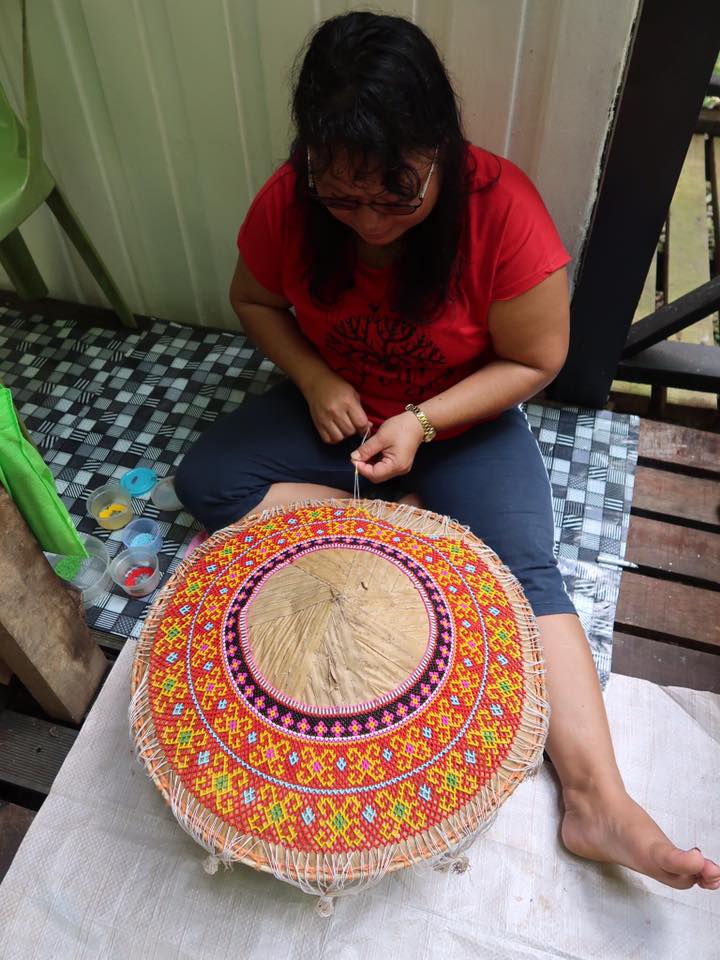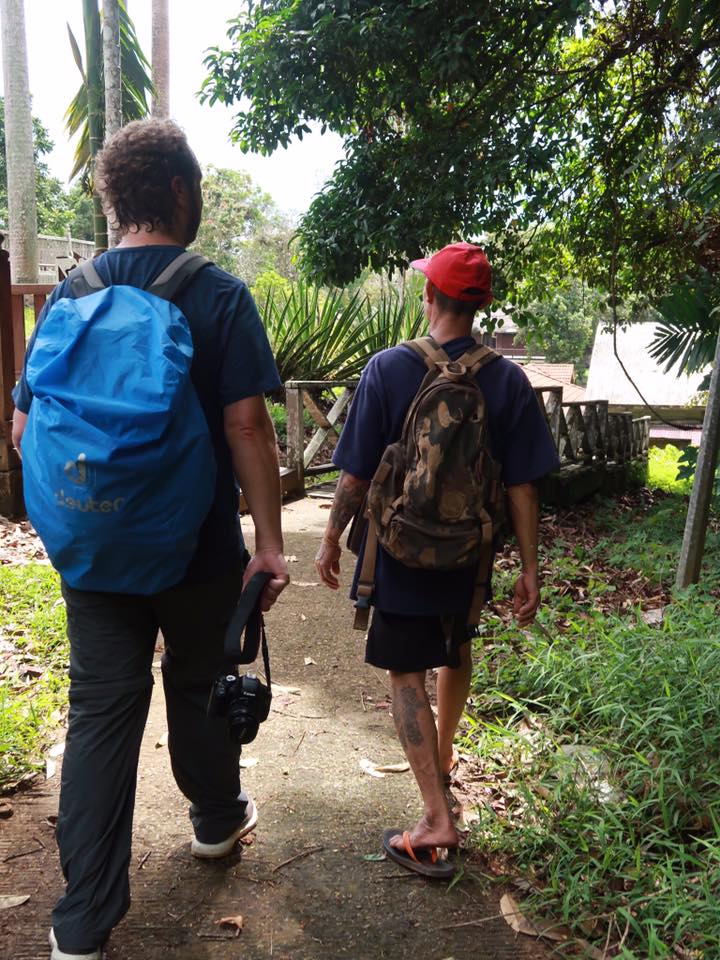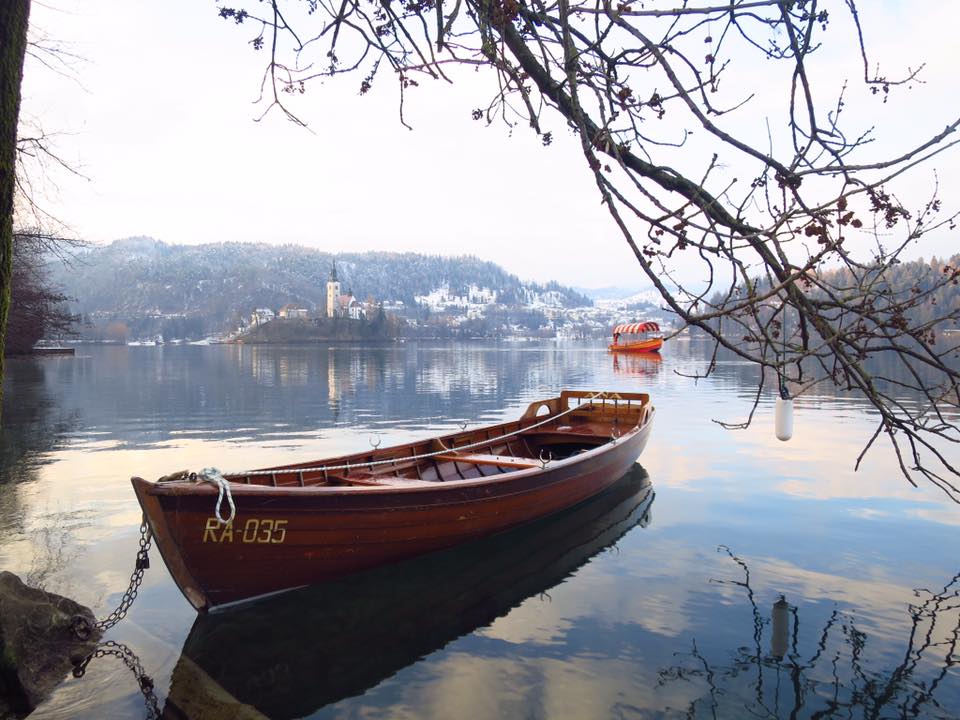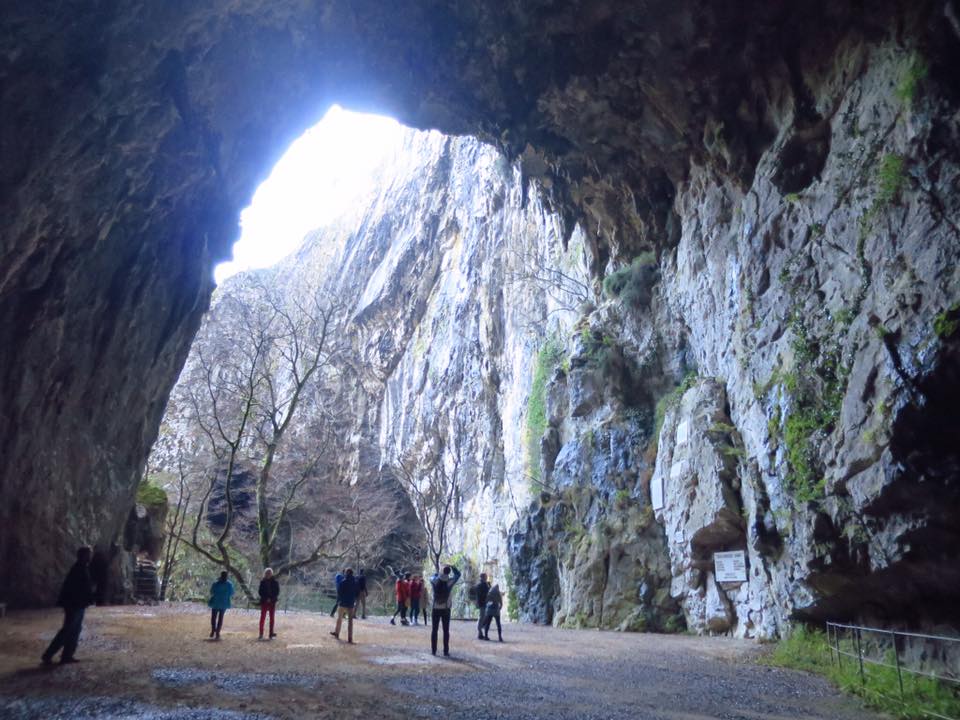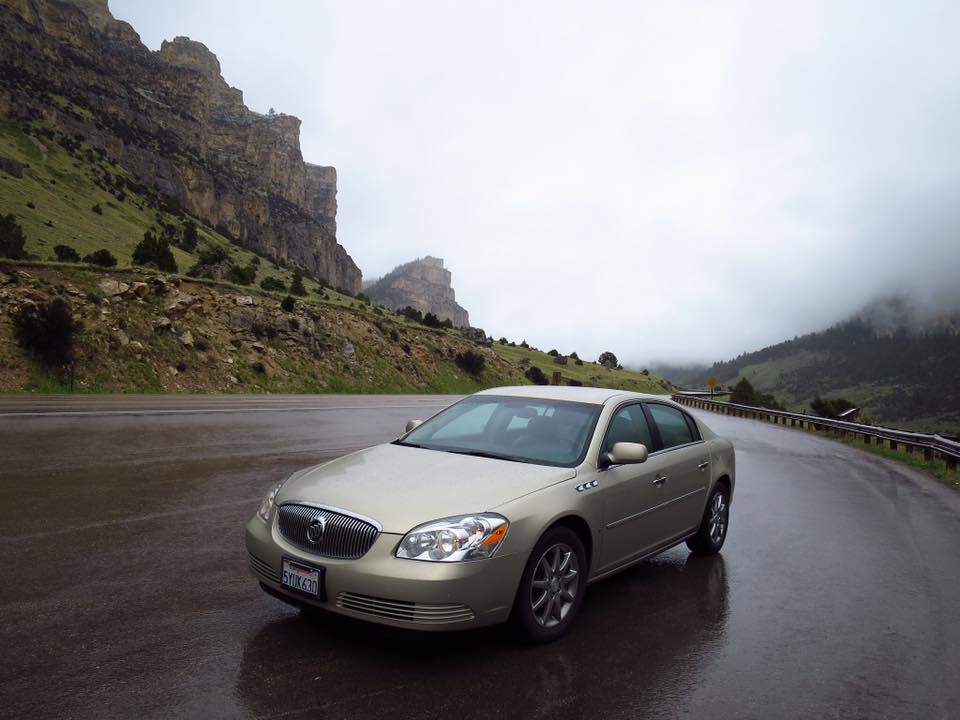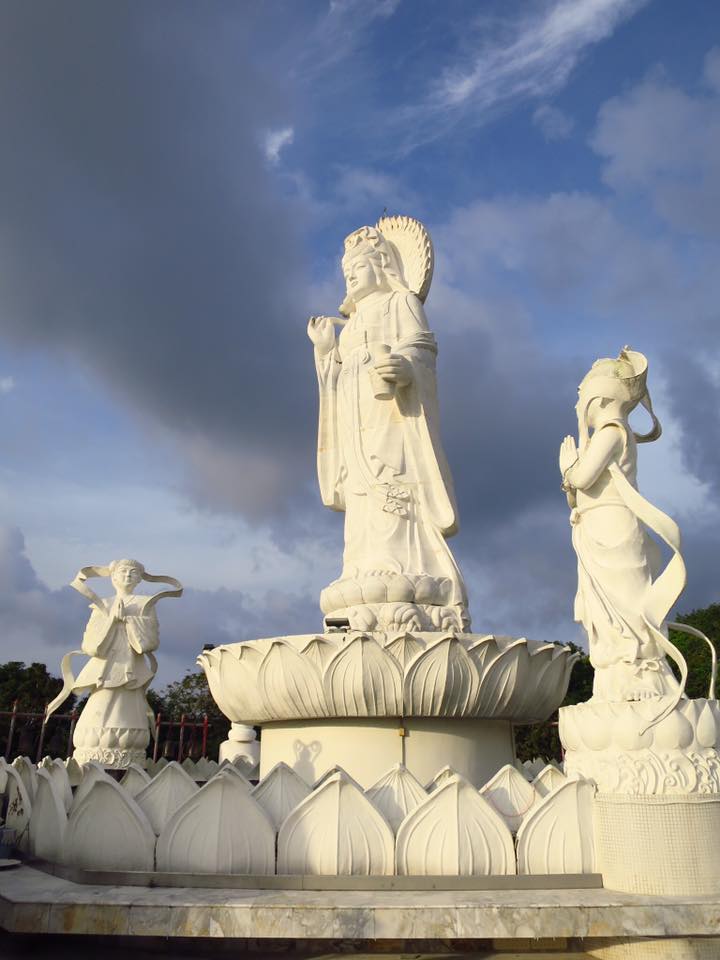We hired a driver to take us from Miri to Niah National Park and then, drop us off in Bintulu; all three places are in the Malaysian state of Sarawak. I had learned about Gua Niah (Niah Caves) in geography class.
After paying RM 1.00 (about USD $0.25) for a 20-second boat ride across the Niah River, we walked for about an hour on a well-maintained wooden path before reaching Traders Cave. We heard monkeys and birds, and saw beautiful butterflies and OK-looking lizards. There were lots of millipedes on the handrail – some single and some coupling. Never thought much about millipede sex, but I didn’t expect them to be the spooning kind. We must have seen a thousand of them. You could say we saw a meterpede.
In Traders Cave, there are some wooden frames that used to be huts. Until the late 1970s, families stayed in these huts during bird nest harvesting season. The nests of swiftlets/swallows are made of their solidified saliva and are made high in the ceiling of the cave. Like many Chinese, and unlike Erickson, I believe in the medicinal value of bird’s nest. It has cured his chronic stomach problems even though he is reluctant to acknowledge it.
Right next to Traders Cave is the Great Cave. The Great Cave’s mouth might just be bigger than mine. The video below was taken right inside the mouth and you could see and hear bats clicking and swiftlets chirping. About ten minutes in, the cave is pitch black. The trail and steep stairs are well maintained, but it’s not possible to navigate without flashlights. Along some stretches, the trail and the handrail were covered with swiftlet and bat poop. It was batshit crazy and I guano part of it on me.
We crossed paths with only five different people in the cave and saw a few from afar. One of the five told me he was checking on the “sarang” (nests). He pointed his flashlight at the nests way up in the ceiling, at the dangling ropes that the bird nest gatherers use to climb all the way up, and at the bridges that connect parts of the ceiling. He said he was there to check on the nests to make sure they’re still there (not stolen). His job is to check on them every two to three days for the next three to four months before they are harvested. A kilogram (2.2 lbs) of bird’s nest can fetch as much as RM 10,000 (about USD $2,500).
From that point of the Great Cave, we could have continued to the Painted Cave where archaeologists found evidence of human dwellings from 40,000 years ago. Our new friend warned that our path will only get even darker and more slippery. This, coming from a guy who came so far into the cave wearing flip flops. It would have been nice to see the cave paintings from some of the earliest homosapiens in Southeast Asia, but it would have taken at least another hour. Besides, our driver still had to drive three hours home to Miri after dropping us off in Bintulu.
More than an hour later, when we were back on the wooden path, we saw our new friend chatting with the few Iban (an indigenous group) ladies who were selling drinks and souvenirs. Earlier, we had promised the ladies we would buy something from them on our way back. We bought two cans of coconut water from two different stalls and a keychain from another. The lady at the fourth stall didn’t pressure us to buy anything from her. Guarding the nearby bathroom was a lady who was making an elaborate beaded collar. She had made a lot of progress since we walked by the first time.
Our friend offered us some “tuak” (local rice wine), but we declined because we didn’t know how it would affect us during our hour-long walk back. As we started walking, he quickly followed. He started telling me things about the forest, the monkeys that want to fight him, the millipedes that really stink if touched, and answered all my questions about the park and the nearby town of Batu Niah where he lives. He was on his way home to take a nap because at night he guards palm oil plantations.
I was beginning to think that he had appointed himself as our tour guide and might ask for a tip later. That would have been fine because he was nice and I learned some cool stuff from him. But the truth was much worse. He said he was waiting for us because he was afraid to make the walk alone. Dude, how you gonna go check on the sarang every two or three days for the next three to four months?! ???
